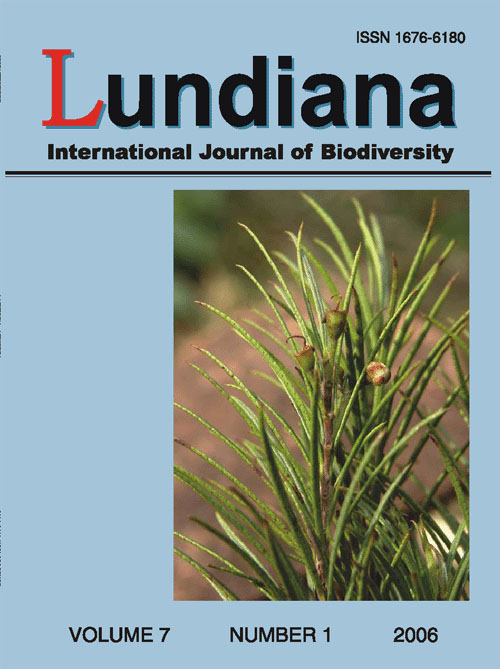A interação entre Cuphea brachiata Koehne (Lythraceae) e seus visitantes florais nas dunas litorâneas de Abaeté, Salvador, Bahia.
DOI:
https://doi.org/10.35699/2675-5327.2006.22184Palavras-chave:
floral biology, Cuphea brachiata, pollinationResumo
The floral biology, flowering behavior and plant breeding system of C. brachiata were investigated in a coastal sand dune ecosystem (12º55’33”S e 38º20’08”W) in Salvador, Bahia state, Northeast Brazil. The behavior of the predominant visiting bees Xylocopa (Neoxylocopa) cearensis Ducke 1910 and Centris (Centris) leprieuri Spinola 1841 was recorded with the aim of identifying their role as potential pollinators. The corolla is yellow, small, zigomorphic and homogamic. Anthesis is diurnal and longevity reaches ca 2 d (n=58); flowering synchrony is low (0.43) at the population level, resulting in a long flowering period. Mean nectar volume for first (2.13 ± 0.93 mL, n=27) and second day (0.96 ± 0.60 mL, n=26) flowers differed significantly (t=5.741, p<0.0001). Nectar concentration was lower in first day flowers (20%) than in second day flowers (26%), probably due to the reduction in volume caused by evaporation. Fruit formation was low in manual self-pollination (7%) and absent for spontaneous self-pollination. The highest percentage of fruit formation (89%) was found in control (natural conditions), suggesting that pollen vectors are important for the reproduction of C. brachiata. X cearensis and C. leprieuri collect nectar by landing on the four lower petals and introduicng their head into the corolla tube. Pollen adheres to the bee’s forehead at the same place that contact the reproductive structures of the flower. X. cearensis is the most efficient pollinator of C. brachiata, considering its local abundance, pattern of foraging activity, frequency of contact with reproductive structures and pollen transport.
Downloads
Publicado
Edição
Seção
Licença

Este trabalho está licenciado sob uma licença Creative Commons Attribution-NonCommercial 4.0 International License.

